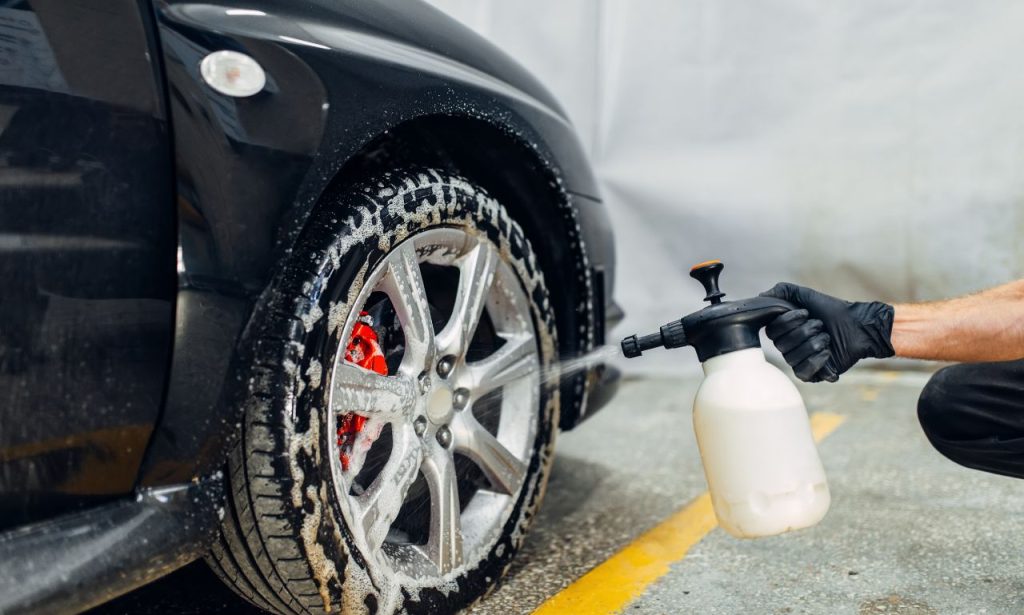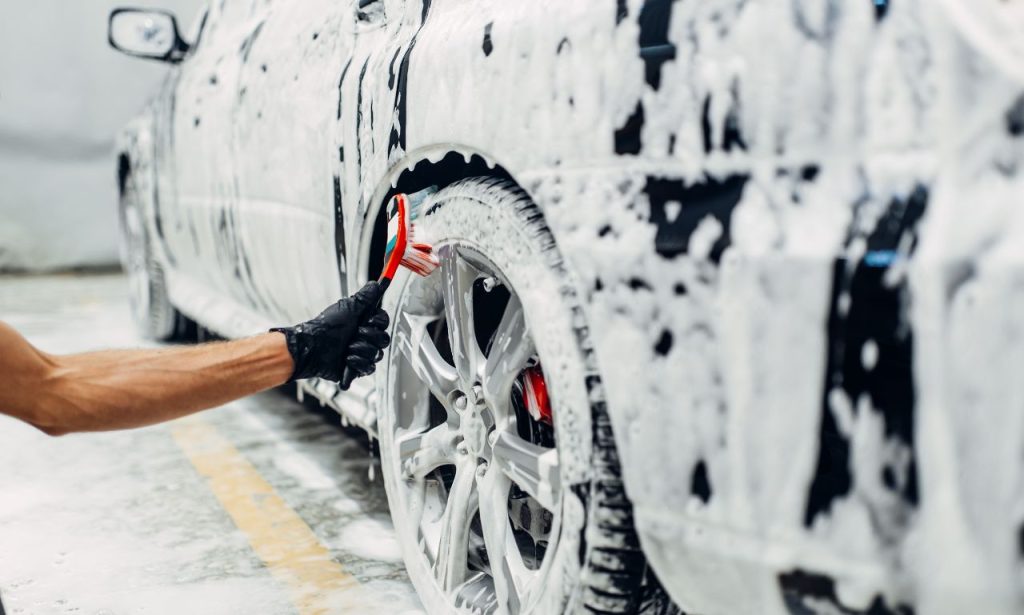Custom wheels aren’t just another car accessory. They’re the detail that makes people turn their heads at a stoplight. They show personality, taste, and in many cases, how much pride you take in your ride.
But here’s the thing: wheels are also magnets for everything nasty on the road. Brake dust, road salt, gravel, tar—you name it, your rims collect it. And if you ignore them for too long? That “showroom shine” turns into a corroded mess faster than you’d think.
I’ve seen it happen plenty of times. A buddy of mine bought a set of polished aluminum wheels, swore he’d keep them clean, but after six months of “I’ll wash them next week,” they were permanently stained—thousands of dollars down the drain.
That’s why caring for custom wheels isn’t just about looks—it’s about protecting your investment.
Essential Cleaning Tools for Custom Wheels
You wouldn’t fix a leaky faucet with a butter knife, right? The same logic applies here. Having the right tools makes wheel cleaning easier and prevents damage to the wheels.
Start with microfiber towels. They’re gentle, won’t scratch, and can be used for both washing and drying. Next, pick up a set of wheel brushes. Think of them as precision tools: one for tight spokes, one for the barrels, and another for lug nuts. Without them, dirt hides in places you’ll never reach.
A simple bucket with a grit guard also makes a huge difference. It traps dirt at the bottom so you’re not scrubbing it back onto your wheels. And if you’ve got a pressure washer, even better. Just remember—use it wisely. Too much pressure can do more harm than good if you get too close.
Selecting the Right Cleaning Agents for Custom Finishes

Here’s where many car owners go wrong. They grab the strongest cleaner they can find, spray it on, and think the job’s done. But harsh, acidic cleaners eat away at finishes, leaving behind permanent damage.
Chrome wheels need a gentle, shine-boosting cleaner. Aluminum wheels—especially bare ones—require pH-balanced products that prevent oxidation. Painted wheels? Treat them like you would your car’s body. If you wouldn’t scrub your hood with it, don’t put it on your rims.
I once saw a guy spray oven cleaner on his wheels because “it works on grease.” Sure, it worked—by stripping the finish right off. That mistake cost him a brand-new set. The lesson? Always match the cleaner to the wheel type.
Essential Protective Gear
Wheel cleaning may not seem dangerous, but it pays to take precautions. Brake dust is a nasty substance, and wheel cleaners aren’t designed to be skin-friendly.
Wear gloves to protect your hands. Throw on safety glasses if you’re spraying chemicals—nothing ruins your day faster than cleaner splashing into your eyes. And don’t wear your favorite t-shirt unless you like permanent black stains.
The Step-by-Step Process for Impeccable Custom Wheel Cleaning
Pre-Rinse and Cool Down
Hot wheels and cleaning products don’t mix. Let them cool down before you touch them. Then give them a solid rinse with water to wash away loose dirt. This step seems basic, but it saves you from scratching the surface during scrubbing.
Applying Your Custom Wheel Cleaner
Spray your cleaner evenly across the wheel, ensuring that you cover all hidden areas. Don’t go overboard, but don’t skimp either. Let it sit for a minute so it can work its magic, but never let it dry out.
Agitating and Deep Cleaning
Now’s the time to work those brushes. Start with the wheel face, then move into the spokes, barrels, and lug areas. It’s like brushing your teeth—if you rush, you’ll miss the spots that matter most.
Some people treat this step like a chore, but here’s the secret: the more patient you are, the better your wheels look.
Thorough Rinsing
Once you’ve scrubbed everything, rinse thoroughly. Don’t just splash a little water—make sure every trace of cleaner is gone. Residue left behind can stain or even corrode finishes.
Drying for a Spotless Finish
Water spots are the enemy of clean wheels. Use a clean microfiber towel to dry every inch of the surface. If you’ve got access to compressed air, use it to blow water out of crevices. It’s a pro-level trick that makes wheels look truly flawless.
Addressing Wheel Wells and Calipers
Imagine wearing polished shoes with dirty socks. That’s what clean wheels look like if you ignore your wheel wells and calipers. Spray them down, scrub with a stiff brush, and rinse. It not only looks better but also prevents buildup that can affect braking.
Routine Maintenance Tips for Custom Wheels

Wheels require consistent care, not just occasional washing. If you drive daily, aim for a cleaning every two weeks. If your roads are salty or dusty, go weekly.
Another trick? Apply wheel wax every couple of months. It acts like sunscreen for your rims, shielding them from brake dust and grime. And don’t forget to rotate your wheels during cleaning—you’ll spot areas you might usually miss.
Tire Dressing and Conditioning
Clean wheels lose their impact if the tires look faded. That’s where tire dressing comes in. Use a water-based dressing for a rich, deep-black look without the greasy mess that silicone products leave behind.
Conditioning your tires also prevents cracking, especially in hot climates. Think of it as skincare for your car—it keeps rubber supple and fresh.
Conclusion
Custom wheels aren’t just accessories—they’re investments. And like any investment, they need care. With the right tools, safe cleaners, and consistent maintenance, your wheels will look as sharp in three years as they did the day you bought them.
So the next time you roll up at a car meet or park in front of a café, your wheels won’t just look clean—they’ll look cared for. And trust me, people notice.
FAQs
Every two weeks, or weekly if you drive in dusty or salty conditions.
Avoid it. Dish soap strips protective coatings and dulls finishes.
Stick to microfiber towels and dedicated wheel brushes.
Yes. Wheel wax adds a protective layer, making cleaning easier.




